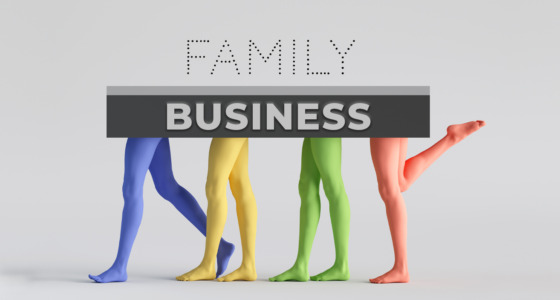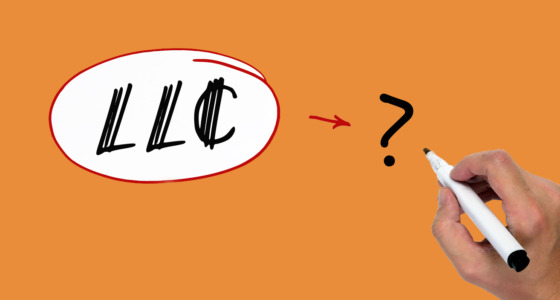

As a business owner or investor, understanding the balance sheet is crucial to evaluating the financial health of a company. The balance sheet provides a snapshot of a company’s assets, liabilities, and shareholders’ equity at a specific point in time. By reviewing the balance sheet, you can determine what the company owns, what it owes, and the difference between the two, which represents the net worth of the shareholders. In this complete guide, you will learn the components that make up the balance sheet, how to read and analyze the balance sheet and see examples to help build your understanding of this fundamental financial statement. With a solid understanding of the balance sheet, you will be well-equipped to make informed decisions and gain valuable insights into any business.
What Is a Balance Sheet and How Does It Differ From a Trial Balance?
A balance sheet is a financial statement that provides a snapshot of your assets, liabilities, and equity at a given point in time. The difference between a trial balance and a balance sheet is that it lists the balances of all accounts in the general ledger.
Assets
Assets refer to resources owned by a company that are expected to generate future economic benefits. They include both current assets like cash, accounts receivable, and inventory, as well as long-term assets such as property, plant, and equipment. Assets are listed on the balance sheet in order of liquidity.
Liabilities
Liabilities refer to the amounts owed by a company to outside parties, such as accounts payable, accrued expenses, and long-term debt. Current liabilities are due within one year, while long-term liabilities are due after one year. Liabilities are listed on the balance sheet in order of maturity.
Equity
Equity represents the residual interest in the assets of an entity after deducting all its liabilities. It includes investments made by owners, retained earnings, and other components like additional paid-in capital.
A balance sheet adheres to the fundamental accounting equation whereby assets equal liabilities plus equity. It provides a comprehensive overview of your financial position to help determine viability and risk. The balance sheet works in tandem with the income statement and cash flow statement to give stakeholders a holistic view of company performance.
Together, these core financial statements provide transparency into the financial health and sustainability of an organization. They are integral tools used by managers, investors, creditors, and regulators to make informed decisions.
Key Components of a Balance Sheet
The balance sheet provides a snapshot of a company’s financial position at a given point in time. It reports a company’s assets, liabilities, and shareholders’ equity. These three balance sheet segments provide investors and analysts insights into the company’s financial strength, leverage, and capital structure.
Assets
Assets refer to resources owned by a company that have future economic value. They include current assets like cash, accounts receivable, and inventory, as well as long-term assets such as property, plant, and equipment. Assets are listed on the balance sheet in order of liquidity, from most liquid to least liquid.
Liabilities
Liabilities refer to amounts owed by a company, such as accounts payable, accrued expenses, and long-term debt. Liabilities are obligations to creditors and are categorized as current liabilities or long-term liabilities, depending on when they are due. Current liabilities are due within one year, while long-term liabilities are due after one year.
Shareholders’ Equity
Shareholders’ equity refers to the net worth of a company, calculated as total assets minus total liabilities. It represents the amount left over after discharging all liabilities and belongs to the owners of the company. Shareholders’ equity increases when a company earns a profit or issues new shares and decreases when a company incurs a loss or buys back its own shares.
The balance sheet adheres to the accounting equation:
Assets = Liabilities + Shareholders’ Equity
Analyzing the trends and relationships between these components over time gives investors a glimpse into the financial well-being and stability of a company.
Examples of Different Types of Balance Sheets: Comparative, Common Size, Consolidated
To fully understand the components and purpose of a balance sheet, it is helpful to review examples of the three main types: comparative, common size, and consolidated.
Comparative Balance Sheet
A comparative balance sheet compares the balances of assets, liabilities, and equity over multiple periods. By analyzing trends in the comparative balance sheet, readers can identify areas of growth or concern. For example, if accounts receivable are increasing at a higher rate than sales over time, it may indicate issues with collections or revenue recognition.
Common Size Balance Sheet
A common size balance sheet expresses each line item as a percentage of total assets. This allows for easy analysis of the composition and proportionality of the balance sheet over time or between companies. For example, if the percentage of long-term debt to total assets is increasing over time, it signals that the company is becoming more leveraged.
Consolidated Balance Sheet
A consolidated balance sheet combines the account balances of a parent company and its subsidiaries. It presents the financial position of the group as a whole. Intercompany transactions between subsidiaries are eliminated to avoid double counting. Minority interests represent the share of subsidiaries’ equity that is owned by outside investors. Consolidated balance sheets provide a comprehensive overview of a diversified group and allow for analysis of the overall capital structure and financial position.
In summary, the three main types of balance sheets – comparative, common size, and consolidated – provide useful analyses of a company’s financial health from different perspectives. Reviewing concrete examples of each type is the best way to develop a practical understanding of how to read and interpret balance sheets.

How to Read and Analyze a Company’s Balance Sheet
To properly analyze a company’s balance sheet, you need to understand its components and how they relate to each other. The balance sheet provides a snapshot of a company’s financial position at a given point in time. It includes three main sections:
Assets
Assets refer to resources owned by a company that have future economic value. They are divided into current assets (cash, accounts receivable, inventory) and long-term assets (fixed assets, investments). Analyze the trend and growth of total assets to determine if the company can generate future revenues. Compare assets to liabilities to evaluate financial stability.
Liabilities
Liabilities are financial obligations owed by a company that reduces its net worth. They include current liabilities (accounts payable, short-term debt) due within a year and long-term liabilities (bonds, leases) due after a year. Examine the trend and ratio of liabilities to assets to assess risk and solvency. A higher ratio means more dependency on debt financing, which adds risk.
Shareholders’ Equity
Shareholders’ equity represents the net worth of a company’s shareholders. It comprises share capital, retained earnings, and treasury stock. Review growth trends year over year to evaluate the company’s ability to generate profits and shareholder value over time. Compare shareholders’ equity to total liabilities to determine financial strength and stability.
Analyzing relationships between these components provides insight into the company’s financial health, growth, risk, and management effectiveness. Reviewing multiple periods allows you to identify trends that signal improving or deteriorating financials. The balance sheet is a useful tool for evaluating a company’s ability to generate future cash flows, meet obligations, and create shareholder value. Used with other statements, it provides a comprehensive understanding of the company’s overall financial performance and position.
Balance Sheet Example Using Reliance’s Financial Statements
A balance sheet provides a snapshot of a company’s financial position at a specific point in time. It lists the company’s assets, liabilities, and shareholders’ equity. The balance sheet gets its name from the fact that assets equal liabilities plus shareholders’ equity.
Assets
Assets are the resources owned by a company that have economic value. They include:
- Cash and cash equivalents: Cash on hand and in the bank. Highly liquid assets that can be quickly converted to cash.
- Accounts receivable: Money owed to the company by customers.
- Inventory: Raw materials, work in progress, and finished goods owned by the company.
- Property, plant, and equipment (PP&E): Long-term tangible assets used in operations. Includes land, buildings, machinery, equipment, and natural resources.
- Intangible assets: Non-physical assets like patents, trademarks, copyrights, and goodwill.
Liabilities
Liabilities are the debts and obligations owed by a company. They include:
- Accounts payable: Money owed to suppliers and creditors.
- Short/long-term debt: Loans, bonds, and notes payable that must be repaid.
- Deferred tax liabilities: Taxes owed in the future.
- Accrued liabilities: Expenses incurred but not yet paid, like wages, interest, and rent.
Shareholders’ Equity
Shareholders’ equity represents the net value of the company after all liabilities have been deducted. It includes:
- Common stock: The par value of shares issued.
- Additional paid-in capital: The amount paid by shareholders for shares beyond par value.
- Retained earnings: Net income retained over time. Represents reinvested profits.
The balance sheet adheres to the fundamental accounting equation: Assets = Liabilities + Shareholders’ Equity. The total assets must equal the total liabilities and equity.
Conclusion
Your balance sheet is one of the most important financial documents you have. By understanding your assets, liabilities, and equity, you gain critical insight into your business or organization’s financial health and stability. Reviewing and analyzing your balance sheet regularly and over time helps identify trends, strengths, and weaknesses to support key strategic decisions. While the balance sheet provides a snapshot at a single point in time, comparing balance sheets from previous periods gives you a more complete picture of your financial progress and performance. Use your balance sheet to build a sustainable financial foundation and achieve long-term goals.










